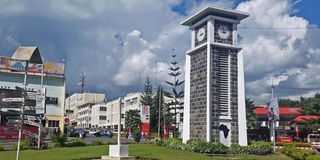Tourism lobby lauds city tourism initiatives for Arusha

Arusha. A tourism lobby has lauded initiatives underway to introduce new tourist attractions within Arusha city.
The Tanzania Association of Tour Operators (Tato) says this will increase the number of nights spent by visitors in the safari capital.
"Introduction of new tourist attractions will make Arusha a destination of its own," said Tato executive secretary Sirili Akko.
He was speaking during the soft opening of a museum aimed to promote the cultural relics of the ethnic groups living around Arusha.
Chief Ndaskoi Memorial Museum (CNMM), located at Moshono on the city suburbs, has been set up in honour of the paramount chief who reigned over 120 years ago at the advent of colonial rule.
It has been established on a 5,000 square metres of land donated by one of his grand sons and initiator of the project Meshack Ndaskoi.
Mr Akko said museums and other attractions would make Arusha "a destination of its own" for the foreign visitors, instead of being a stopover for those heading to the national parks.
He regretted, however, that the famous safari capital does not have much to offer for tourists from abroad besides hotel rooms and savourniers.
"There are few attractions here to make visitors spend more nights in Arusha," he said, noting that this must change through diversification of attractions.
A tourism officer with the Tanzania Tourist Board (TTB) Ndaisaba Michael said the initiative was welcome and that the tourism agency would support it.
"We will work hand-in-glove with the Ndaskoi family to promote the project and by extension the city tourism," he said.
According to him, Arusha city currently has three major museums; two of which are under the Natural Resources and Tourism ministry.
These are the Natural History Museum located at the 120 year-old German boma and the Arusha Declaration Museum at Kaloleni near the Uhuru Torch tower.
The Natural History Museum was established to house, curate and research various paleontological, paleoanthropological, and archaeological artifacts collected from various parts of the country.
The Arusha Declaration Museum is dedicated to the political economy of Tanzania and houses literature on pre-colonial, colonial and post-colonial history of the country.
The opening of Chief Ndaskoi Memorial Museum was graced by Bishop Solomon Maswangwa, the recently-retired Head of Lutheran Church's North-Central Diocese.
"Having this museum is a good idea. It will enable people of Arusha, in particular, to learn about their past," he said.
The traditional leader of the Maasai Isaack Ole Kisongo Maijo said the cultural artifacts at the museum were rich in the history of the Maasai who lived in the entire Arusha area prior to the colonial rule.
Mr Ndaskoi, who doubles as the executive director, said museum project is a product of a ten year effort he embarked on in 2014
Although the facility will be anchored on the rich history of Chief Ndaskoi, it will contain enough information on Arusha "not much known to many people so far".
He added that he consulted widely before launching the project, reaching out to experts at the University of Dar es Salaam and the National Archives, among others.
Adjacent to the museum will be a botanical garden for which Mr Ndaskoi, a retired public servant, has donated 4,400 ha of land for the purpose.
Chief Ndaskoi was born in 1857 within the precincts of the present Arusha city from the Maasai agro-pastoralists known as Ilarusa.
He would later be ordained as the paramount chief (Laiguanan) or spokesman of the community, specifically those living within Arusha.
He fought several battles with the invading German forces until 1900 when he lost, paving the way for the occupation of Germans in Arusha.




